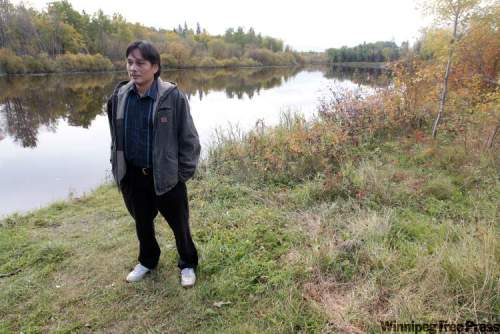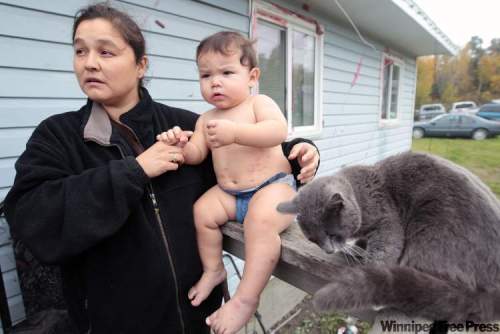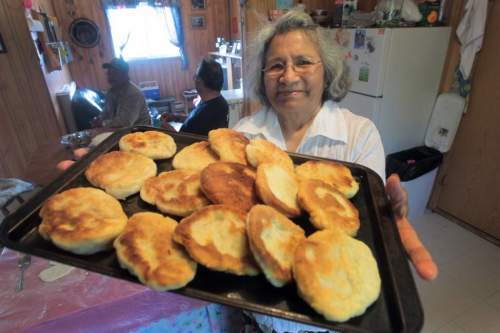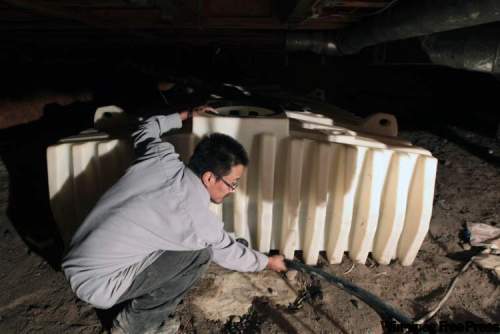Other Water Woes
Safe water a human right: Canadians
2 minute read Monday, Nov. 15, 2010ALMOST all Canadians believe clean water should be guaranteed as a human right, according to a poll to be released in Winnipeg this month by the Trudeau Foundation and the University of Manitoba.
Of those surveyed, 96 per cent said water should be a guaranteed right, while only two per cent said it should not -- the strongest response to any of the six emerging rights the pollsters proposed.
"The public is concerned about this question of water and environmental problems much more than we think," said Trudeau Foundation president Pierre-Gerlier Forest. "I find it quite encouraging."
The support for clean water as a human right was solid across income groups, education levels and regions of the country. Adults under the age of 45 were a bit more supportive, as were women.
Advertisement
Weather
Winnipeg MB
-10°C, Snow
Sewer superhero
6 minute read Monday, Nov. 15, 2010FISHER RIVER -- At midnight on a bitter Manitoba winter night when the sewage plant on a remote First Nation breaks down, who you gonna call?
Troubleshooter Ken Mattes.
He has installed a water plant for the Canadian Forces in Egypt and built warm flush toilets for soldiers cleaning up radioactive debris from a Soviet satellite that crashed in the Arctic.
"We had running water in a week."
Water service survey
5 minute read Monday, Nov. 15, 2010Engineers have fanned out across Canada to evaluate the state of water and wastewater services on almost every one of the country's 610 First Nations.
The $9-million assessment comes in the wake of a long list of damning government reports, issued over more than a decade, that warned about the health consequences of not solving reserve water woes.
The project, co-ordinated by Winnipeg engineer Heather MacKenzie, is supposed to help the federal government pin down what it will cost to bring up to standard every First Nations water and sewage plant in Canada.
A similar assessment in 2003 pegged the cost at about $1.7 billion over five years. Almost that much was spent by 2008, but 117 First Nations still have to boil their drinking water.
Billions spent
6 minute read Monday, Nov. 15, 2010NO one can accuse the Canadian government of ignoring water and waste-water systems on First Nations over the last 15 years.
The Library of Parliament estimates $3.5 billion was spent between 1995 and 2008 and hundreds of millions more have been committed since.
After that kind of staggering expenditure, why is tap water on so many First Nations unfit to drink and why do half the homes in Island Lake lack running water?
Then-Indian Affairs minister Chuck Strahl pretty much admitted this spring his department cannot keep up with infrastructure needs on reserves -- unless there's a major change in how projects are funded.
Stuck with the flow
5 minute read Preview Saturday, Nov. 13, 2010Boiling mad
6 minute read Preview Saturday, Nov. 13, 2010Years of warnings
5 minute read Saturday, Nov. 13, 2010The Canadian government has been warned repeatedly about the water crisis on First Nations reserves in a long string of alarming reports:
1977: The federal cabinet decided reserve communities ought to be supplied with public services to the same level as non-aboriginal communities in similar circumstances.
1996: The Royal Commission on Aboriginal Peoples reported that water and sanitation systems in aboriginal communities were more often inadequate than those in non-aboriginal communities.
2001: Indian and Northern Affairs Canada found a significant risk to the quality or safety of drinking water in three-quarters of reserve systems.
Problem solver
5 minute read Preview Saturday, Nov. 13, 2010‘A slap in the face’
6 minute read Preview Friday, Nov. 12, 2010Keep on truckin’
5 minute read Preview Saturday, Nov. 6, 2010Green alternative or inferior service?
3 minute read Saturday, Nov. 6, 2010Should First Nations with homes spread far apart turn to alternative technologies such as composting toilets and single-home filters?
Anna Fontaine, Manitoba regional director for Indian and Northern Affairs Canada, said money is being invested at the national level to explore environmentally friendly alternatives.
A pilot project in Opaskwayak Cree Nation outside The Pas by Winnipeg's Centre for Indigenous Environmental Resources concluded composting toilets can be used even in very cold climates.
However, there hasn't been much uptake from First Nations, where residents sometimes view composting toilets not as a 21st-century green alternative, but as another attempt to get them to accept second-class services. A composting toilet big enough to handle the waste from a large family can also be as expensive as hooking up a home to a nearby sewer line.
LOAD MORE





